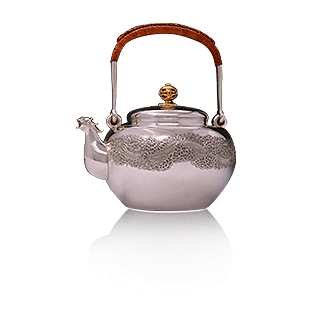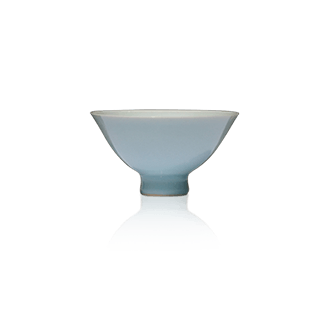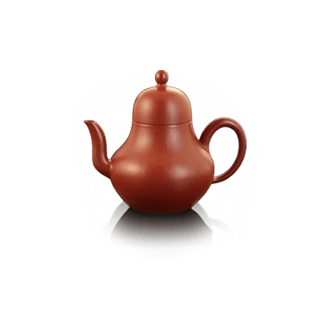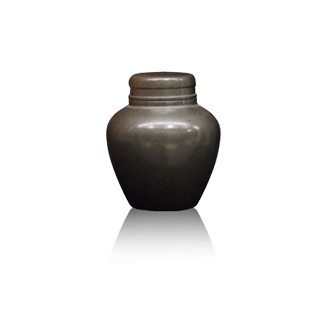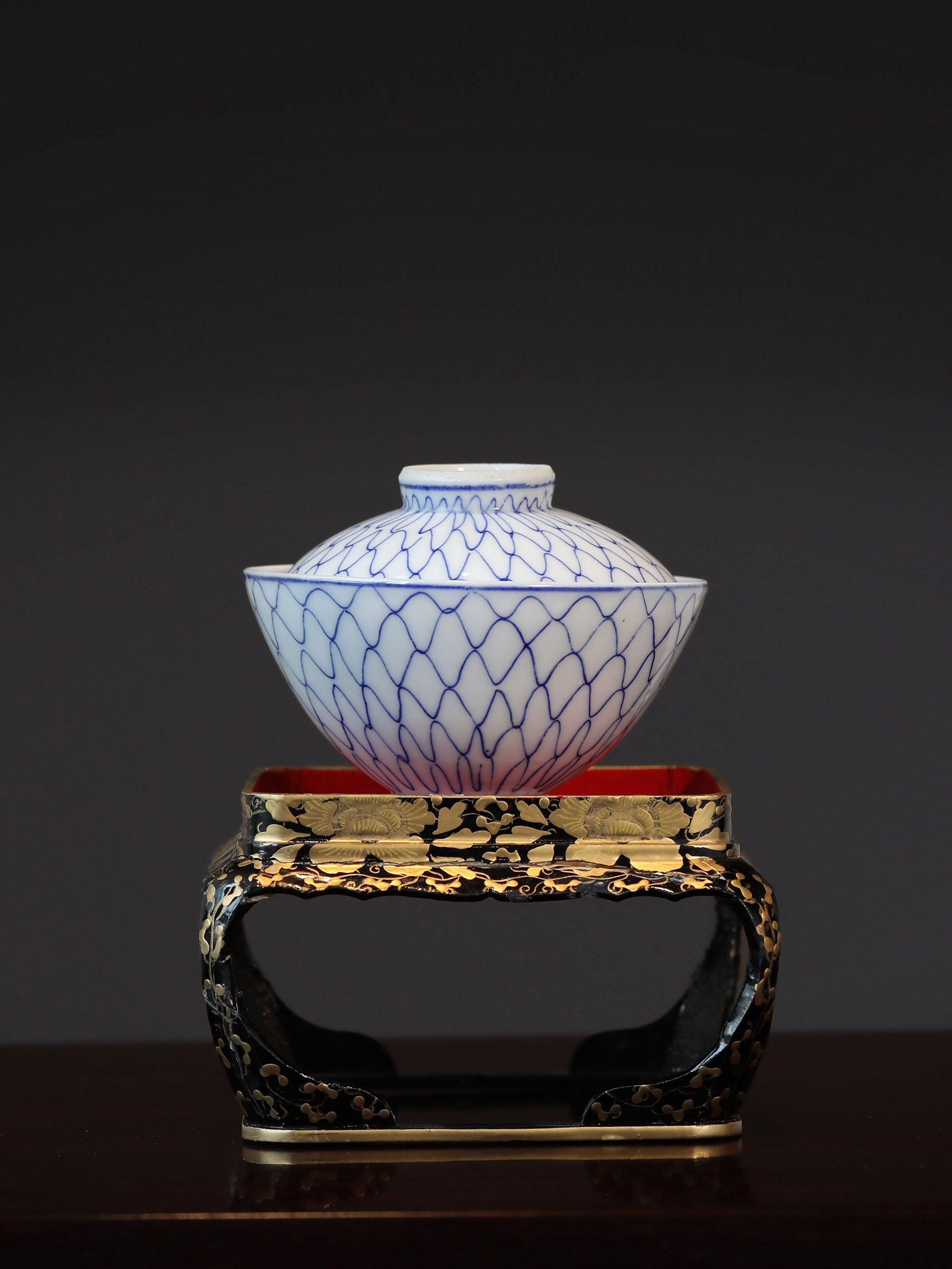




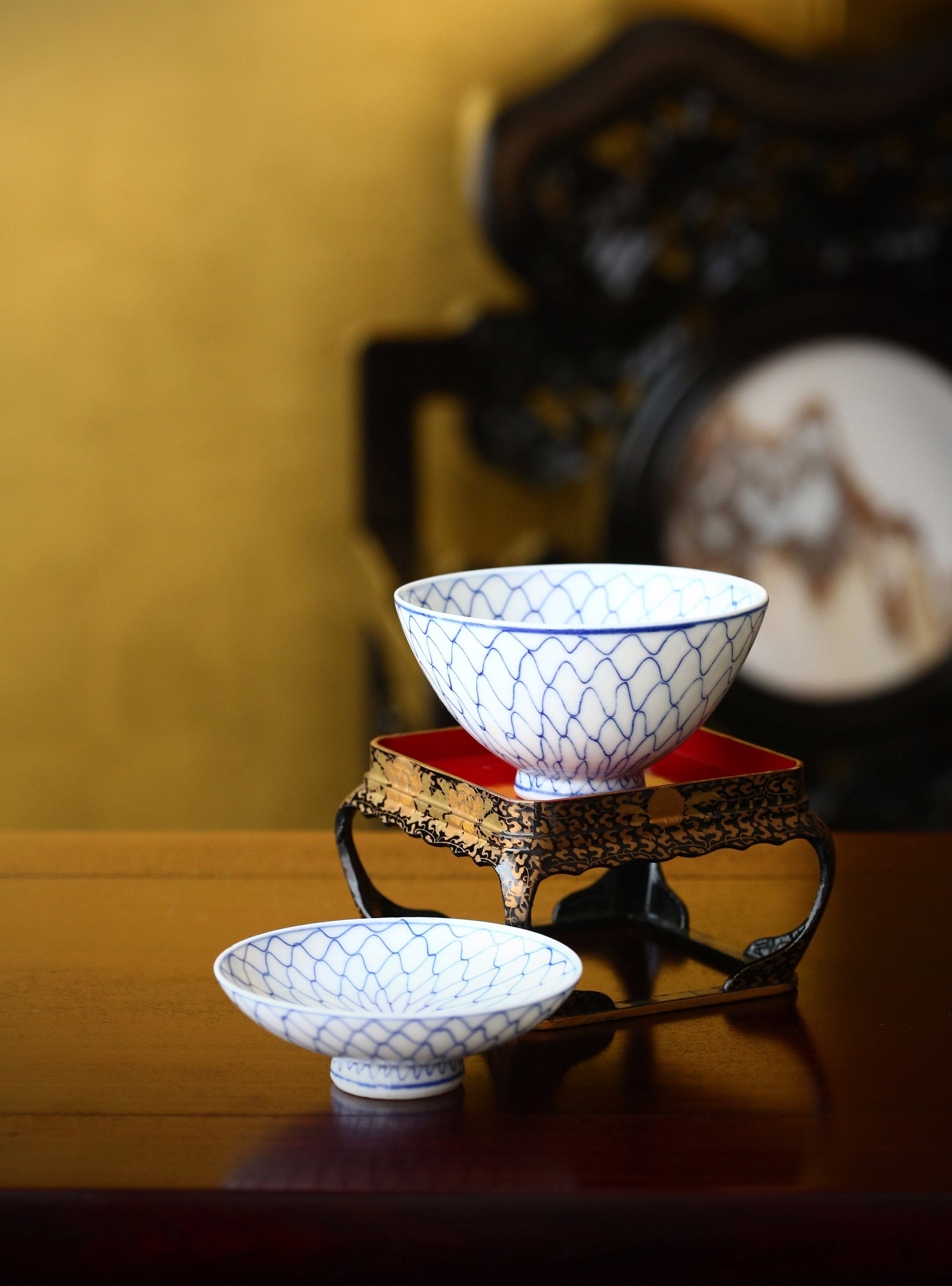
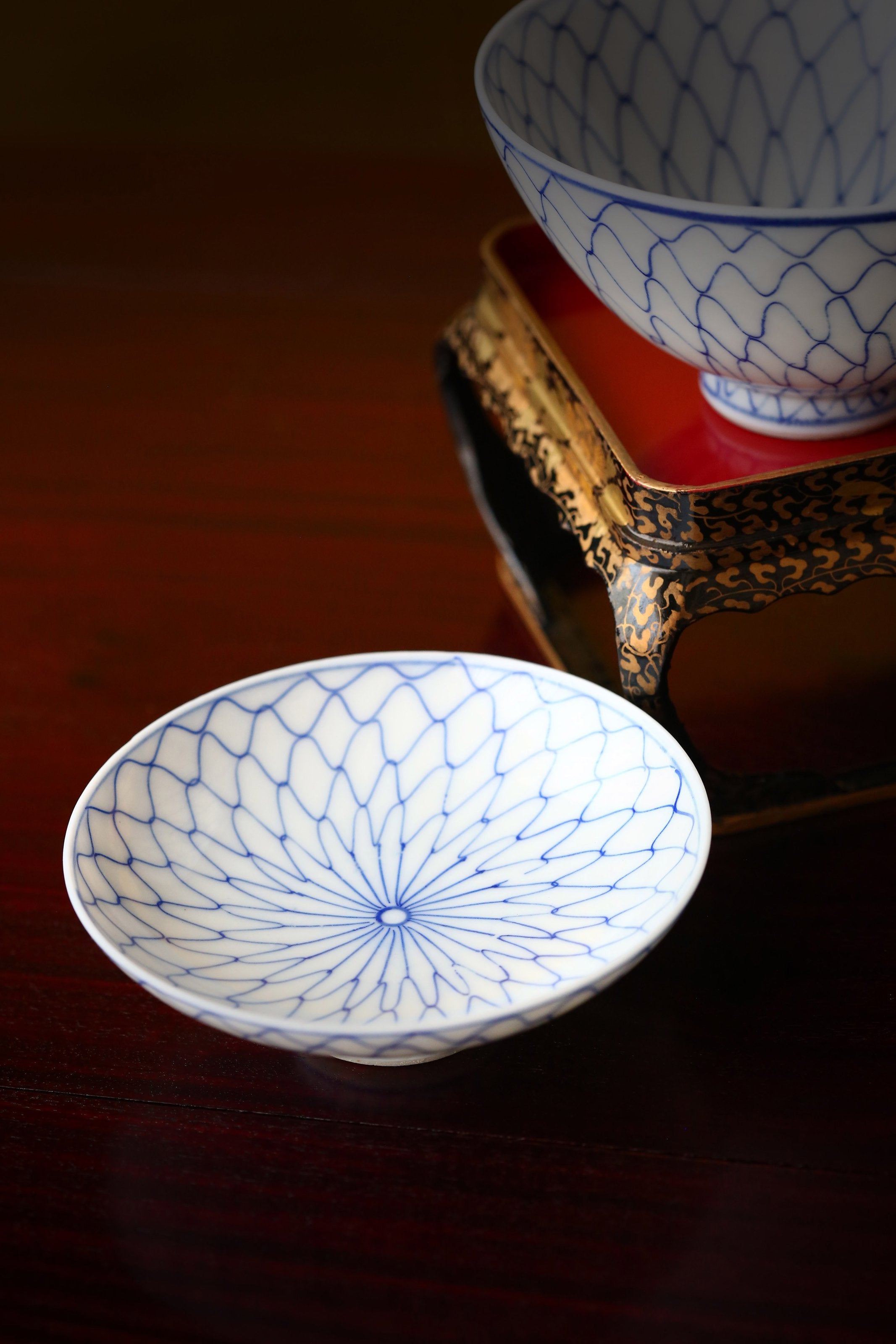

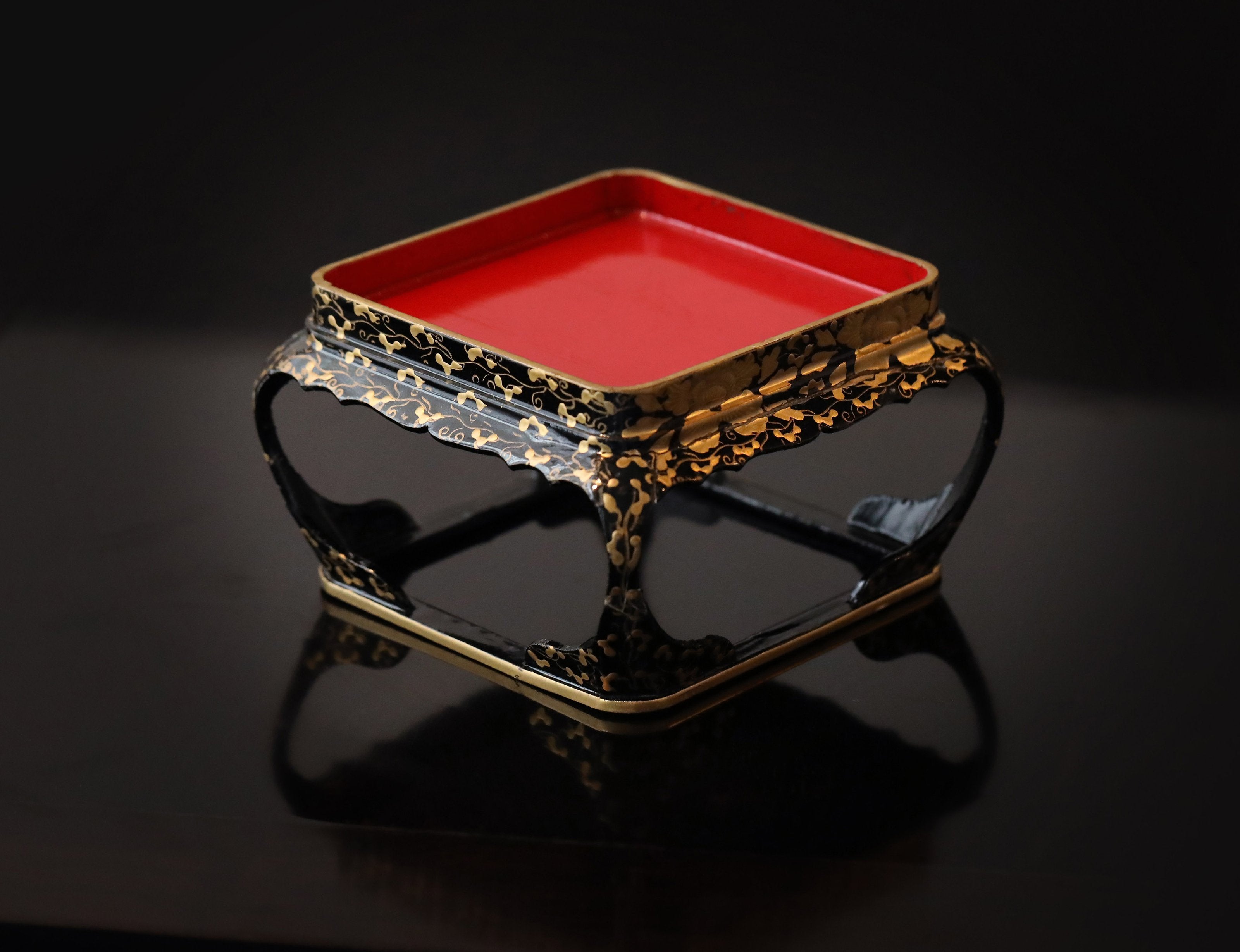
Fishing net pattern blue and white covered bowl / maki-e lacquer stand











Fishing net pattern blue and white covered bowl / maki-e lacquer stand
Fishing net pattern blue and white covered bowl / maki-e lacquer stand
Fishing net pattern blue and white covered bowl / maki-e lacquer stand
Vessel Type: Gaiwan (盖碗)
Artist: dayatang
Material: Porcelain
Specifications: Rim Diameter: 11.5cm; Overall Height: 9.5cm
lacquer base Length : 13.5cm Width : 13.5cm (Width) Height :8.5cm (Overall height)
The Japanese Imari Gaimon (lidded bowl), or covered bowl, originates from the Imari island of Japan, which shares a common lineage with China. These objects are quiet, serene, and natural, neither flamboyant nor noisy.
The gaiwan is an antique. I believe that the elegance of Japanese bowls and cups is unparalleled, so I felt an instant connection with it. Japanese gaiwans originated in the Azuchi and Momoyama periods (corresponding to the late Ming Dynasty). In the late Ming and early Qing Dynasties, the Japanese gaiwan shape was introduced to China, coinciding with the popularity of the Chinese tea-drinking method (steeping tea). This gradually led to the development of the (three-part) gaiwan of the late Kangxi period in China, which is still in use today.
The exchange of porcelain patterns and shapes between China and Japan has never ceased, with intricate mutual imitation and borrowing forming a continuous lineage. A small, damaged Japanese stand is included as a bonus. The stand is made using the lacquer maki-e technique, with free-flowing floral patterns throughout, and gold added to the lacquer to highlight its precious color. It has bulging legs, four feet, a cusped apron, and graceful curves, and comes with a base.
Vessel Type: Gaiwan (盖碗)
Artist: dayatang
Material: Porcelain
Specifications: Rim Diameter: 11.5cm; Overall Height: 9.5cm
lacquer base Length : 13.5cm Width : 13.5cm (Width) Height :8.5cm (Overall height)
The Japanese Imari Gaimon (lidded bowl), or covered bowl, originates from the Imari island of Japan, which shares a common lineage with China. These objects are quiet, serene, and natural, neither flamboyant nor noisy.
The gaiwan is an antique. I believe that the elegance of Japanese bowls and cups is unparalleled, so I felt an instant connection with it. Japanese gaiwans originated in the Azuchi and Momoyama periods (corresponding to the late Ming Dynasty). In the late Ming and early Qing Dynasties, the Japanese gaiwan shape was introduced to China, coinciding with the popularity of the Chinese tea-drinking method (steeping tea). This gradually led to the development of the (three-part) gaiwan of the late Kangxi period in China, which is still in use today.
The exchange of porcelain patterns and shapes between China and Japan has never ceased, with intricate mutual imitation and borrowing forming a continuous lineage. A small, damaged Japanese stand is included as a bonus. The stand is made using the lacquer maki-e technique, with free-flowing floral patterns throughout, and gold added to the lacquer to highlight its precious color. It has bulging legs, four feet, a cusped apron, and graceful curves, and comes with a base.









Frequently asked questions
Use the FAQ section to answer your customers' most frequent questions.
Order
Yes, we ship all over the world. Shipping costs will apply, and will be added at checkout. We run discounts and promotions all year, so stay tuned for exclusive deals.
It depends on where you are. Orders processed here will take 5-7 business days to arrive. Overseas deliveries can take anywhere from 7-16 days. Delivery details will be provided in your confirmation email.
You can contact us through our contact page! We will be happy to assist you.





